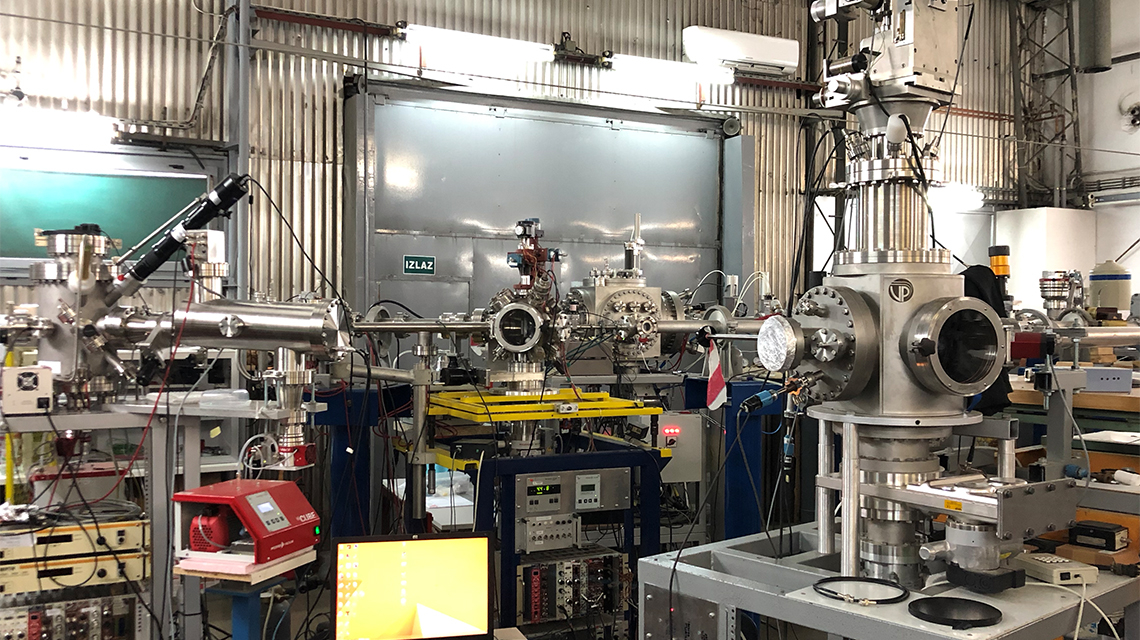A dual ion beam facility, which enables two ion beams from different accelerators to be combined simultaneously, has been inaugurated in Zagreb, strengthening Croatia’s fusion research and expanding the global supply of facilities with such cutting-edge capabilities. Installed with IAEA support, the Ruđer Bošković Institute’s He Ion Source & DiFU Dual-Beam Facility will help scientists test and develop new structural materials indispensable for fusion energy to become a reality. Only very few facilities of this kind exist worldwide.
Fusion researchers and engineers work to develop methods to harness the power generated by the fusion of light nuclei, a process comparable to the energy production of stars. It holds the promise of abundant, safe and carbon free energy.
However, fusion reactions generate highly energetic neutrons and alpha particles which, after some time of exposure, can damage reactor walls. Ion beam technology like the dual-beam facility in Croatia can simulate these extreme conditions and help to develop new materials sturdy enough to sustain them.
“Installation of the He ion source at the smaller 1.0 MV tandem accelerator was the last missing component at the RBI accelerator facility, which is now capable of performing the most realistic simulation of the fusion environment,” said Milko Jasic, Senior Scientist at the Ruđer Bošković Institute’s Laboratory for Ion Beam Interactions. “This investment will also enable increased use of ion beam analysis techniques for a wide range of other applications.”
“It will allow researchers and engineers to test that materials are robust enough to contain a fusion reaction, among other things,” added Danas Ridikas, Head of the Physics Section at the IAEA. “The facility is good news for Europe and for IAEA Member States in other regions too.”
The Ruđer Bošković Institute has been working with the IAEA through a collaborative agreement signed in 1997. The IAEA has provided the Institute with equipment and assisted through a capacity building programme. The IAEA recently launched a new coordinated research project to facilitate experiments at ion beam facilities worldwide. Interested scientists from other IAEA Member States also have access to the Institute, including this new dual ion beam facility.







